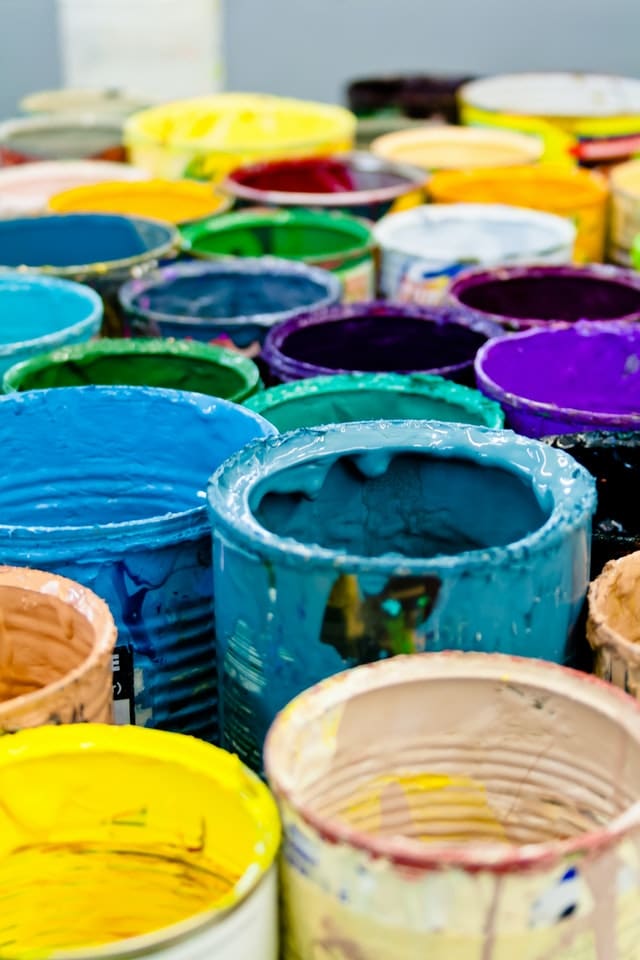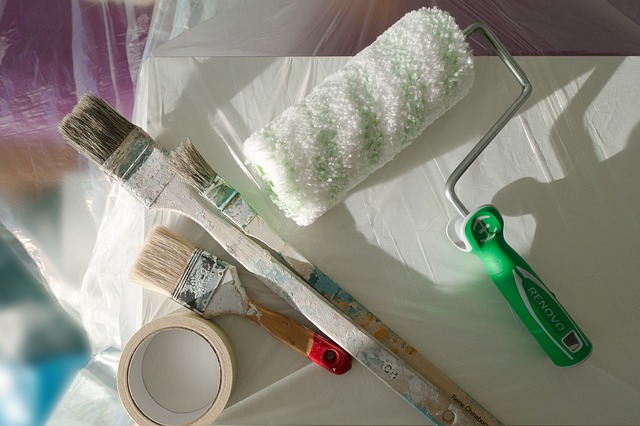How Long to Wait Between Paint Coats – A Comprehensive Guide

You’ve scrubbed your walls, filled in the holes and cracks, and chosen the perfect paint colour. Now it’s time to start painting! But what you may overlooked is how long to wait between paint coats. While it’s tempting to splash your second coat as soon as you’ve applied the first, you will be doing more harm than good.
Painting over wet paint that hasn’t thoroughly dried can cause bubbling, cracking, streaks, or clumps, resulting in an undesirable finish. In addition to looking bad, repairing these problems can often be time-consuming and laborious. Not sure how to deal with cracked paint? Check out these tips. We also have tips on how to prevent and remove paint chalking here.
This guide will tell you how long to wait between paint coats so you can complete your project as quickly and smoothly as possible.
Here are some Painting Mistakes you will want to avoid.
The Difference between Dry, Recoat, and Cure Times
Before we get into the specific recoat time for each paint type, it’s important to understand the difference between dry, recoat and cure times.
Paint Dry Time
The amount of time it takes for the paint to lose its wet appearance. Although paint won’t stick to your fingers when touched, it is still not ready to apply your second coat of paint.
Paint Recoat Time
This is the right amount of time you should wait before applying your second coat. Painting recoat times will vary considerably, taking only 1-2 hours for flat latex paint to 24 hours for oil based paint.
It’s widely believed that oil-based paints result in a better finish and minimise the need for snagging and could therefore be worth the wait.
Paint Cure Time
This is the final stage of the drying process after the paint has dried. During this time, the paint will reach its full strength and durability. You’ll now be able to wash and scrub your walls without fear of damaging the paint job. Curing time will depend on your paint and environmental factors. Oil-based paints will generally take 31 days to cure, while latex paints can take up to 21 days.
How Long Between Coats of Paint Should you Wait and What are the Factors Involved?
Now that we’ve gone over the basics definitions, it’s time to get into the specifics. Three factors will affect how long you should wait between paint coats, which include the paint type, paint thickness, and the weather conditions.
Paint Type
There are numerous paint types on the market, and each one has its own recoat time. Here Let’s go over the recoat time for oil-based paint and latex paints:
Oil based Paint Drying Time
Oil-based paints are known for their durability, providing resistance against scratches, scuff marks, and other surface damages. However, they also take the longest to dry and cure.
After application, it will typically take 2-4 hours until the paint is dry to the touch. However, you’ll have to wait a minimum of 24 hours until you can apply a second coat.
Water-based Paint Drying Time
Latex paint is water-based, making it a popular choice for those who are environmentally conscious. It dries and cures much faster than oil-based paint, as the paint cures through evaporation.
As water-based paints come in different finishes – matte, eggshell, semi-gloss, and high-gloss – the recoat time will also vary. Flat paints typically dry faster than glossy paint, with eggshell and semi-gloss being in the middle. Below is a general guide for recoat times:
Flat Paint – 1-2 hours
Egg Shell Paint – 2 hours
Semi-gloss Paint – 2 hours
High-gloss Paint – 2 to 2 1/2 hours
Primer – 1 hour
You will also want to check out this Guide on How To Choose Paint.
Thickness of Paint Affects Drying Time

Thinner paint coats take less time to dry than thicker coats. However, applying your paint coats too thinly can lead to inadequate coverage and cause it to split. Conversely, too much paint can cause mud cracks, resulting in a clumpy, uneven finish.
When deciding on the thickness of your paint coats, find a happy medium that will give you the best coverage. However, to dry your paint as quickly as possible, opt for a paint roller to achieve a thinner coat.
How Temperature Affects Time between Paint Coats
Temperature can also affect how long you should wait between paint coats.
Warmer temperatures will speed up the drying process, causing paint particles to move around more and evaporate faster. However, accelerating the drying process can also cause your paint to wrinkle or have bumps. In contrast, colder temperatures will slow down the drying process, potentially causing dew to form on the surface.
Latex Paint – Temperatures between 50 and 85 Fahrenheit are the ideal drying conditions for latex paint to sufficiently dry.
Oil-based Paint – Temperatures between 40 to 90 degrees Fahrenheit are ideal for oil-based paint.
How High Humidity Affects Paint Drying Time
Humidity is the amount of water vapour in the air. When humidity is high, the air is already saturated with water, causing the paint to take longer to dry due to not being able to evaporate as easily. The ideal humidity level for paint is 50% or lower.
FAQ
What happens if you apply a second coat of paint too soon?
Applying the second coat of paint before letting it dry will result in peeling, clumping, and bubbling that can be time-consuming and expensive to repair. It can also result in an uneven colour, ruining its appearance.
Is 3 coats of paint too much?
Three coats of paint can be a little much, but it will depend on the colour and quality of your paint. Cheap paint generally is thinner and will need more coats, so three may be the right amount. High-quality paint is usually thicker and generally only needs two coats.
How can you make paint dry faster?
- Ensure you’re painting in a well-ventilated room for air to circulate – this will help decrease the room’s humidity.
- Apply thinner coats as opposed to thicker coats for faster drying.
- Consider using a paint roller instead of a brush, as this will help achieve a thinner coat..
- Paint in warmer temperatures to speed up the drying process, or use a heater if you’re in a cold environment.
How to know if your paint is ready for a second coat?
This will depend on the paint you are using. Latex paints can be recoated with paint much faster than oil-based paint. When applying paint, always check the label to see the recoat time. As a general rule, wait for latex paint to dry for 1-2 1/2 hours and for oil-based paint to dry for 24 hours.
Is one coat of paint enough to paint a wall?
You’ll find that one coat of paint is seldom enough, resulting in a diluted paint colour. To resolve that, simply apply a second or even a third coat of paint. The reason for that depends on your wall. For instance, if you have black walls and want to make them white – one coat of paint will not be sufficient since the drastic colour change will require more coats.
What happens if I recoat paint too soon?
Applying the second coat of paint before letting it adequately dry will result in your paint peeling, clumping, and bubbling. It can also result in a different colour than what you intended.
What does sanding between coats do?
Sanding between coats will help the paint adhere better and create a silkier, smoother surface. If you have found odd lumps or bumps after applying your first coat, quickly sanding the surface may help to fix that.
Key Takeaways
- Drying, recoating, and curing times are different terms that represent each stage of the paint drying process.
- Water-based paints dry significantly faster than oil-based paints due to the water component in the paint evaporating.
- Temperature and humidity can significantly affect the drying time of the paint.
- Thinner paint coats will dry faster than thicker coats. For faster drying times, use a roller rather than a brush.
- Applying a second coat of paint before the first coat has adequately dried will result in the new coat peeling, cracking, or clumping.
Newline Painting – Interior and Exterior Painters at Your Service
If you’ve had your fair share of painting projects that went wrong, it may be time to call in the professionals. NewlinePainting is a reliable and experienced Melbourne house painting company that can take on any project, big or small. We offer a wide range of services, from bathroom fixture painting to feature wall painting. We cover a wide range of areas in Melbourne, including Abbotsford, Carlton, Clayton, Ivanhoe, Yarraville, and more.
Contact us today at 1300 044 206 or visit our booking page for a free quote! You will also want to check out these Painting Hacks for a better overall DIY painting experience.
